The End of the Game, a Mystery in Four Parts
In a first-hand account of participating in an alternative reality game, one player gets caught up in the challenge
/https://tf-cmsv2-smithsonianmag-media.s3.amazonaws.com/filer/Luce-Foundation-Center-631.jpg)
Three months ago, I wrote an article for Smithsonian magazine about "Ghosts of a Chance," the new alternate reality game at the Smithsonian American Art Museum's (SAAM) Luce Foundation Center.
With Ghosts, SAAM became the first major American museum to host such a game. Georgina Bath Goodlander, program coordinator at the Luce Center, told me the goal was to attract the young audience that museums have a hard time holding onto. She hired John Maccabee, a former historical novelist and current game designer, to plan and execute the game, which started on September 8 and ended in an event October 25 at the museum.
While working on the game, Goodlander and Maccabee tackled questions about museum management and the digital future of brick-and-mortar museums. Can alternate reality games, which mainly take place on the Internet, be adapted for a physical collection, like a museum's? Will young gamers, with their notoriously flexible attention spans, be interested? And will regular museum-goers find the players and their quests disruptive to a more private, reflective experience?
When I asked Maccabeeall these questions, he told me I could only find the answers if I crossed the curtain: in other words, if I became a player.
The game took me from Wikipedia pages to online forums, from Washington, D.C.'s Congressional Cemetery to a dark lab hidden in the warren beneath the National Museum of Natural History. It also revealed a great deal about the Luce Center, and how the Internet has changed the museum-going experience.
1: The Game
When I started playing, I didn't know what an alternate reality game (ARG) was.
Maccabee sent me to Wikipedia, that great library of contemporary knowledge, which describes an alternate reality game as follows:
"An interactive narrative that uses the real world as a platform, often involving multiple media and game elements, to tell a story that may be affected by participants' ideas or actions."
Finding that only marginally helpful, I followed the trail to Unfiction.com, a Web site that serves as a hub for the alternate reality gaming community. Here, players meet up on message boards to swap clues and information about the games they're playing. Unfiction.com had an entire board dedicated to the history of alternate reality games. There, I learned that the first alternate reality game was "The Beast," invented in 2001 by Microsoft to promote the Steven Spielberg movie Artificial Intelligence. The game's creators crafted a murder mystery and scattered the clues to its solution across Web sites, voicemail messages, fake ads and e-mails. Players worked together online to solve the clues and find the answer to the mystery. This collaborative model, in which players take on the roles of investigators, is the "traditional" ARG. In as much as any ARG can be considered traditional.
But I also learned that no two ARGs look the same. Some, like the LonelyGirl15 franchise (also a popular YouTube series) have "live events" in addition to their online storyline. At live events, players descend on a real location and role-play the story with hired actors. Since live events aren't scripted, players' decisions can change the outcome of the game.
Meanwhile, newer educational ARGs add interactivity to academic subjects. This is what "Ghosts" attempts to do with the collection at the Luce Center: create a communal experience in a space that's normally meant for individual reflection.
Museums exist in a strictly bounded world. There are necessary rules about how closely visitors can approach an artifact, and under what light and humidity conditions. There are even apocryphal tales of visitors being thrown out of museums because they mistook a priceless Edo-era Japanese teacup for a drink holder, or tried to tell time with an Egyptian sundial. Ghosts began with the lofty goal of narrowing the divide between observer and observed, by incorporating the interactivity possible through the Web.
2: The Story
Once I understood what ARGs are supposed to do, I was ready to join the hardcore gamers on the Ghosts thread at Unfiction.com. ARGs have multiple types of players. Some are hardcore gamers, those who solve clues and advance the storyline. Others are casual observers, who hang around on the forums and let the more experienced players handle the actual grunt work. I was of the second variety.
When Maccabee revealed his first clue, players were flummoxed by the unorthodox presentation, and many refused to believe the Smithsonian could be involved. In essence, Maccabee had hired a professional bodybuilder to crash an ARG conference in Boston, with clues tattooed (temporarily!) all over his body. Some of the players at the conference snapped pictures of the body art and posted them online, and within hours a player had traced one of the tattoos, labeled "Luce's Lover's Eye," to a matching painting that appeared in the Luce Center collection.
"I hope we shook [the players] up a bit," said Goodlander, with a mysterious smile, when I asked her about the bodybuilder bit.
From there, the story got even more bizarre. The basic premise, as Maccabee revealed to me early on, was that certain artworks in the Luce Center collection had become "haunted." Players had to figure out who the ghosts were and why they had died. Then they had to banish the sprites back to the realm of the dead, or…well, in the real world, nothing. But in the world of the game: catastrophic destruction.
Maccabee's penchant for bodice-ripping Victorian drama meant that the story was always juicy, and I checked players' progress frequently on Unfiction.
But the clues that got me the most excited came from the live events.
3: Close Encounters in Congressional Cemetery
Part of the lure of the Smithsonian museums lies in what visitors can see: the meticulously curated and researched exhibits. But an equal part of the lure lies behind closed doors, where a lot of the Institution's work goes on. These research rooms are classified realms, accessible only to Smithsonian staff.
Maccabee enticed players by inviting them to an underground, secret laboratory in the depths of the Museum of Natural History. In keeping with the macabre theme of the game, players examined the skeletons of long-dead people and learned how to determine a cause of death. The ultimate goal was to connect two "mystery" skeletons with characters in Maccabee's story. These characters, who died of distinctly unnatural causes, became ghosts. Drawn by the art in the Luce Center, they took up residence there.
A few weeks later, a clue led players to a benign-seeming tour at the historic Congressional Cemetery in Washington, D.C. There, we toured thousands of graves and stumbled upon a mysterious message from Maccabee's ghosts in one of the crypts. Actors, dressed in black, spoke to us in Morse code from the shelter of the trees. Later, I would learn that the ghosts in the graveyard were meant to be the ghosts in Maccabee's story, the same ghosts who had haunted the Luce Center. As with all the clues, these were immediately posted and analyzed online.
The haunting came to a head on October 25 at the American Art Museum, when a crowd of museum-goers and gamers solved a series of six quests that took them through every floor and past most of the artworks in the museum. Along with hundreds of other players, I trudged from first floor to fourth. I collected clues from artworks, from docents and from text messages sent to my phone. Maccabee told me afterwards that he partnered with the Playtime Anti-Boredom Society, a group that organizes nighttime street quests in San Francisco, to create the complex series of clues that greeted players.
It took four hours, but in the end, we banished the ghosts and finished the story.
4: The Future
When I wrote my first story about alternate reality games, I spoke with Jane McGonigal. Jane is a veteran game designer, but her most recent work focuses on using the ARG's collaborative model to address real-world questions.
"ARGs work best when players solve actual mysteries," she said then. In her opinion, museums were perfect for such mystery-solving, if only because the history of many artifacts is obscure or unknown.
It's no secret that mystery clings to museums like a coat. Despite this, Maccabee's story was not a true mystery. The final solution was as much explication as discovery. I always knew the players would defeat the ghosts, because the main point of this ARG wasn't to expel sprites but to see the artwork that had enticed them. This is what is meant by an "educational" ARG.
Jane also that "ARGs are not the future of gaming."
ARGs are not the future of museum-going, either. Or at least, not the entire future. There will always be those—perhaps the majority—for whom seeing a museum is a closed experience. But for those who played "Ghosts" on the Web and those who attended the various live events—estimates range as high as 6,000 online participants and 244 attendees at the live events—the game became a doorway into the museum and into a discussion. We didn't just look at the exhibits; we played with them.
/https://tf-cmsv2-smithsonianmag-media.s3.amazonaws.com/accounts/headshot/anika-gupta-240.jpg)
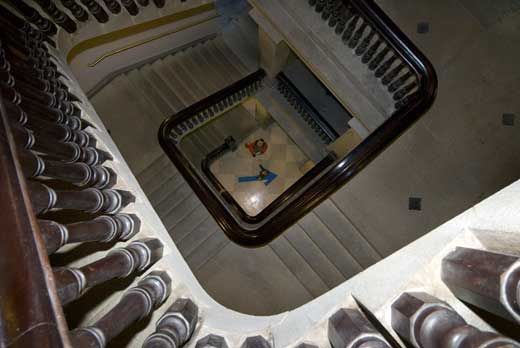
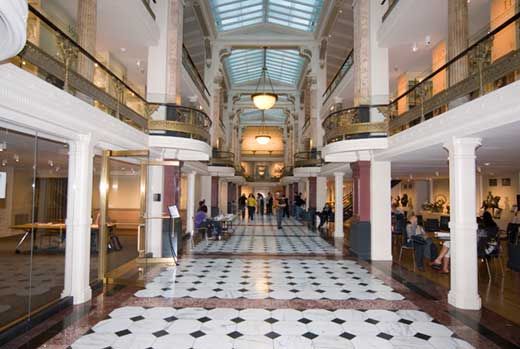
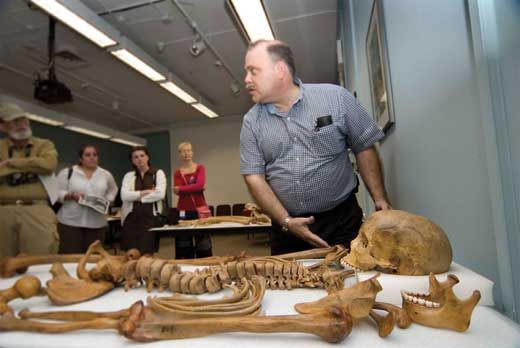
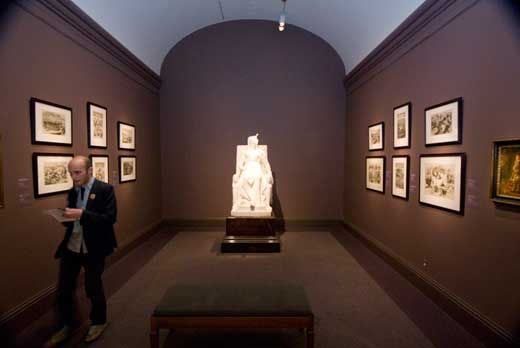
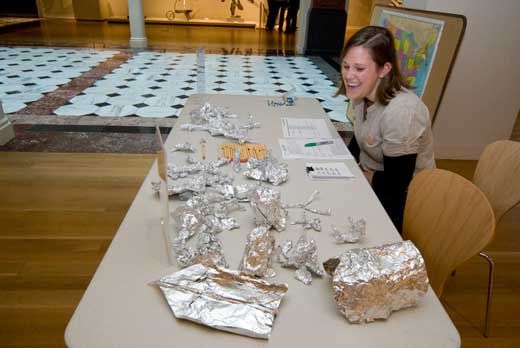
/https://tf-cmsv2-smithsonianmag-media.s3.amazonaws.com/accounts/headshot/anika-gupta-240.jpg)